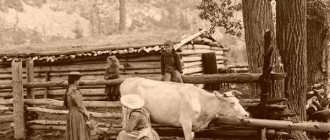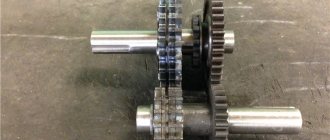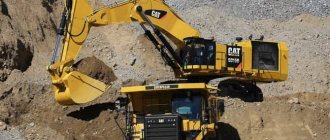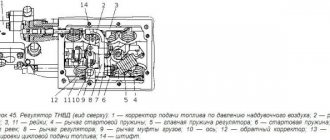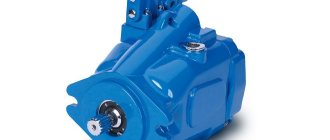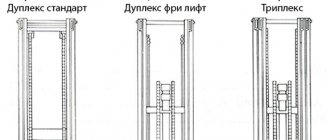How to choose the right quality milking machine
Milking machines are characterized by their technical data, mobility and type.
Lightweight and small in size, the units can serve one or two cows - great for small households. For larger farms, larger machines are used. The most popular is a lightweight device due to its mobility. The devices differ in the class of vacuum pumps.
| Pump type | Description |
| Diaphragm pump | found in budget versions of milking machines and is designed to serve several heifers |
| Piston pump | less durable, noisy and large in size |
| Rotary pump | practically inaudible during operation and does not frighten animals at all |
When choosing a device, you should pay attention to the method of vacuum formation. In one case, a vacuum is formed in the device due to the operation of a pulsator and a centrifugal pump. In the other, the work of the pulsator is performed by a piston pump, which affects the pressure. When choosing a device, carefully study all the advantages and disadvantages of each device. For example, machines with a pulsator are more complex and expensive, but guarantee high milk yields. Devices with a piston pump are easy to operate at a budget cost, but the quality of milking is lower than that of machines with a pulsator.
Pay attention to the mobility of equipment. The device can be mobile or used stationary. The mobile machine is suitable for large farms. The cart is equipped with wheels and supports, in addition to all the necessary components. The machine easily moves around the service area, processing a large number of heads. The stationary machine is designed for milking a maximum of three cows located at close range.
When purchasing a milking device, you should pay attention to the quality of the teat rubber. The health of the cow's udder depends on this part of the unit. The use of rubber in rubber is considered to be of higher quality. Inserts made from low-quality raw materials crack over time, accumulating bacteria and thus harming the health of the cow. You will have to replace the nipple rubber at least once a year. Please note that the price corresponds to the quality of the purchased unit, assembly of parts, functionality and ease of use.
Classification
The devices differ in technical qualities and performance, namely:
- By clock frequency: 2 and 3 stroke. The former have less weight and are used more often, since the device must be carried frequently.
- By the number of simultaneously served heads. The simplest milking devices can pump milk out of 1 or 2 cows (goats) at the same time. Larger specimens are used in large agro-industrial farms; they milk 10 or more animals at one time.
- According to the installed vacuum pump. There are three types - membrane, piston and rotary. The first can serve a maximum of 3 cows; the devices with it are silent and inexpensive. The second is intended for large farms, it is very loud and heavy. Rotary pumps are the quietest and can operate in small spaces.
- Based on the principle of milk collection. In budget copies it is sent into a can, in large and expensive ones it goes through pipes. As a rule, in the second case these are stationary installations.
Each class of devices is used in certain conditions: on private farms, in medium-sized farms, in agricultural complexes
Rules for using devices
Due to the noise of some models of milking devices, it is better to accustom animals to their work in advance. After the cow gets used to it, you can start using special equipment. If the female cattle has never been milked by hand, then you can start milking using technical means immediately after calving. Before doing this, you must carefully examine the animal. If all the readings are good and the cow’s health is not in danger, you can begin the milk collection procedure.
The technology of milking using technical devices consists of the following points, which must be strictly adhered to:
- wash the udder thoroughly with warm water and dry it with a towel;
- massage the nipples and udder with clean hands;
- check the serviceability of the milking unit;
- set the pressure to low and place cups on each nipple, ensuring a snug fit;
- during milking the pressure should be increased;
- after completing the process, palpate the udder and, if necessary, manually milk the remaining milk;
- Finally, you need to wipe the nipples and surrounding areas and lubricate them with Vaseline.
Thus, proper use of the milking machine will greatly facilitate farm work and increase the efficiency of livestock farming.
Principle of operation
Milking machine: 1 – milking cups;
2 – collector; 3 – pulsator; 4 – milk pipeline; 5 – container for collecting milk. The functioning of the milking machine is based on the operation of a vacuum pump. A glass is attached to each teat of the cow.
When the device is connected to an electric current, milk is sucked out, which flows through glasses through hoses into a container for collecting it - a bucket or can.
The milk suction technology is as follows:
- A vacuum is created in the nipple chamber, in which there is always low pressure.
- A pulsator installed on the lid of the can emits vacuum pulses into the glasses. The presence of a pulsator allows you to control the supply of vacuum, making milking more comfortable for the cow.
- Under the pressure of vacuum pulsation, the nipple is compressed in the interwall chamber.
- When low pressure is created in these two chambers, milk flows first into the collector and then into the storage tank.
- The pressure in the interwall chamber rises to atmospheric pressure, parallel to which the rubber tube contracts and squeezes the nipple, and the milk stops flowing.
A similar operating principle is typical for push-pull milking machines, which perform 2 main functions - they compress the nipple and pump out milk.
There are also three-stroke devices, the difference of which is that they suck milk from each nipple in turn, squeezing them in order.
Between suction cycles, short breaks are taken to restore blood supply to the mammary glands, thanks to which the cow quickly gets used to the device.
In a three-stroke machine, 50 pulsations occur per minute, and in a two-stroke machine - 90.
The operating principle of two- and three-stroke devices is presented in the diagram:
Which milking machine to choose?
When choosing a milking device for a cow, an important factor is the type of machine , which involves the process of collecting milk in several steps. It is necessary to take into account the rate of milk release, as well as the size of the animal’s udder.
When the cows that their owner will milk have approximately the same parameters, then you can buy two-stroke equipment for this. In other cases, it is best to give preference to three-stroke devices.
As we have already said, milking in several stages means that the animal can rest, but milk production is slightly reduced. This issue must be taken very seriously. This is due to the fact that continuous milking without preliminary selection of cows can injure the udder .
When milk collection will take place away from the farm or on pastures, it is advisable to give preference to mobile structures, which must necessarily have devices for cleaning the product, and subsequently for cooling it.
When purchasing a device, it must be checked on site. You need to pay attention to the tension of the belts, their stitching, make sure that the collector is working properly, and also determine the presence of cracks on the pulsator. When the elements are made of plastic parts, it is necessary to carefully inspect them at the joints.
In order to be able to provide the stationary milking device with certain functions, the assembly is made from separate parts . For this purpose, the store will need to place an order for specific parts so that they can be assembled together.
Advantages of machine milking
Progress in agriculture hastened to help farmers. Not only industrial machine milking devices have been invented, but also units used in private or small farms where one or two cattle live.
As you know, the milk collection procedure must take place at a certain time, so to carry it out it is necessary to involve several milkmaids. They carry out the necessary procedure for more than one hour, which causes a lot of inconvenience both for the workers themselves and for the animals.
The use of machine milking devices helped eliminate the described difficulties. They greatly reduce pumping time, facilitate manual labor for workers, milk the animal as much as possible, which has a beneficial effect on their health and virtually eliminates the risk of mammary gland disease.
Assembling a milking machine for cows with your own hands
make a milking machine for a cow with your own hands only if you have ready-made components ; the use of improvised materials is unsafe for the animal and is technically impossible. But, one way or another, in some cases, individual assembly is quite advisable, as it can reduce the cost of the milking machine.
In addition, factory equipment often combines the excellent quality of some parts with significant shortcomings of others. During self-assembly, it is possible to combine only high-quality components in one device.
A little information about the choice of other elements can help not only those people who planned to assemble a machine for milking cows, but also those who decided to buy this device, for a more thorough assessment of the characteristics of all the proposed options.
Collector and pulsator
Working in a “pulsator-collector” pair, this equipment is designed to create vacuum and pressure . It is more economically profitable to use improved pulse collectors, which are more efficient and cheaper.
Hanging knot
When choosing the elements of a hanging assembly, it is very important to take into account certain features. Glasses made of transparent material make it easier to control the process. The pad that is adjacent to the udder must be made of neutral rubber that is safe for the animal (one of the best options is rubber material).
Silicone suction cups firmly secure the glasses and make it possible to work in three-stroke and gentle (at reduced pressure) modes.
Bucket
Buckets for milking cows are made from different materials:
- made of food-grade plastic - cheap, do not rust, easy to clean, but short-lived;
- made of stainless steel - durable, but expensive;
- aluminum - not subject to oxidation and lightweight.
For goats
DaMilk AID-1
The convenient device will delight the user with ease of control. The unit is easy to maintain and does not cause rejection in animals. The long service life will please the farmer; the special design will protect the body from falls and impacts from livestock.
The components are made from durable materials. Stainless steel glasses are not afraid of frost and temperature changes. The cover of the device is made of aluminum, the nipple rubber is of high quality. The manufacturer also took care of safety: there is engine overheating protection, food hoses do not contain toxic materials.
DaMilk AID-1
Advantages:
- many positive reviews;
- convenient, well-thought-out design;
- wheels for transportation;
- long warranty period;
- safety.
Flaws:
- only for large farms.
The average cost is 20,000 Russian rubles.
Leader 20.2
The domestically produced product is made from the highest quality components. The model is universal, it can be used not only for goats, but also for cows. The dry type pump is designed for long service life. The engine power is capable of serving one animal without interruption. The pulsator is combined: it combines paired and synchronous milking. This eliminates the need for additional hand milking.
According to reviews, the product is not prone to breakdowns and frequent repairs. Management does not cause difficulties; operation is not capable of developing complications and pathologies in the animal. The durable design will withstand many years of service in farming of any size.
Leader 20.2
Advantages:
- long service life;
- strength and reliability;
- safety;
- ease of operation.
Flaws:
- none.
The average cost is 34,000 Russian rubles.
Mini Milka MDU – 5K
Ideal option for a small farm. Using such a unit, the user has the opportunity to quickly and efficiently obtain large volumes of milk. The main advantages of the product include its productivity - it is capable of serving livestock daily for 15 years. There is a system that controls the filling of the udder, which will prevent harm to the animal. If there are restless animals in the herd that do not allow the operator and the machine to approach them, it is possible to milk from a distance. A long hose is provided for this.
Long service will not affect the engine; it is reliably protected from burnouts and heating. Also, do not be afraid of temperature changes and cold air. The system is designed with these features in mind.
Mini Milka MDU – 5K
Advantages:
- well-thought-out system;
- affordable price;
- safety;
- long service life;
- performance.
Flaws:
- not suitable for a large farm.
The average cost is 22,200 Russian rubles.
DeLaval milking machine
For a personal farmstead with 3-5 cows, it is recommended to purchase the MMU 11 model. Milking speed 5 min. for 1 cow. When milking time is reduced, the process becomes simple, the decision comes to expand the farm and purchase more animals. This situation is standard, so experienced business owners advise buying the DeLaval MMU 12. The device milks 2 cows at once.
DeLaval has a number of advantages. Its reliability and ease of maintenance are noted. The equipment is connected to a 220 V network, they wait a minute to establish a pressure of 50 kPa, and put glasses on the udder. The milk line is made of transparent helium material. You can easily control the beginning and end of milking. Can volume - 30 l. It is plastic and transparent. There is no need to constantly open the lid to determine how full it is.
DeLaval is loud, but there are no other drawbacks. Motor-electric dry type. No need to worry about oil leaking from it. The device is delivered fully assembled. The only negative is that the equipment is Swedish: the price depends on the Euro exchange rate.
Milkline equipment
Milkline milking machine made in Italy. The company constantly organizes promotions. Along with the milking equipment, a drinking bowl and feeder can be included free of charge. Milkline Compact2STD is a milking machine for 2 cows.
Reviews on the forums say that the rate of milk collection is high. In 1 hour, milk is taken from 32 cows. Milk flows into 2 containers simultaneously. The volume of each can is 30 l. It is made of transparent plastic. Food grade plastic is used for milk tubes. The tubes are transparent. Dry type vacuum motor with graphite plates. Livestock breeders note the quiet operation of the device. A muffler is provided to reduce engine noise.
Equipment with three-stroke milking. The phases of squeezing and expressing milk alternate with a resting phase. In this way, the calf sucks milk from the udder. Manufacturers have brought the milk collection mode during machine milking as close as possible to the natural process of feeding calves. Maintenance of the unit is minimal: it is washed after each milking. The forums note the high performance of the device, but it is necessary to check the udder after milking. Sometimes there is 200 grams of milk left.
Equipment "Milka"
Milka milking machine made in Russia. The warranty period is 12 months, but the equipment must be constantly looked after and preventative measures taken. The engine is oily and noisy. On the forums they say that milk collection is efficient. Milking speed for 1 cow is 8 minutes. Additionally, no manual milking is required. Some reviews indicate the instability of the Milka equipment. Oil flows out of the pump, onto the belt and onto the support frame.
Milka milking machine
In order to reach a certain pressure, you need to wait quite a long time. The Milka device does not injure the udder. There are silicone attachments on the milking cups. The milk line is made of transparent plastic: it is convenient to control the amount of milk and the end of milking. The milk can and milking cups are made of stainless steel. To determine the filling of the can, you need to open the lid.
Apparatus "Burenka"
The equipment is manufactured in Russia. Many farmers have purchased the device and do not regret it. On the forums it is advised to buy a “Burenka Tandem” machine for milking 2 cows. 20 heads are served in 1 hour. There is one milk can, made of food grade steel. Milk tubes are made of transparent plastic. The inserts in milk glasses are also made from it. Through transparent windows and tubes it is easy to control the beginning and end of milking.
The forums note the stability of the equipment. Oil does not leak from the motor and pump; pressure in the vacuum line is created quickly. No special care required. It must be washed after milking. The device is inexpensive compared to foreign analogues, from 30 thousand rubles. Judging by the reviews, livestock breeders prefer to use the Burenka apparatus rather than the Milka unit.
Production
The Russian market mainly presents milking machines manufactured in Russia, Turkey, Ukraine, and China. Alternating pressure pulsators are usually used made in Turkey, although, it seems, there are already domestic analogues of the LL90 pulsator.
The choice was made on products from Russian manufacturers, since in addition to the support of the domestic manufacturer, the devices themselves are of an acceptable level of quality (judging by the reviews on the websites), with normal technical support (if you communicate by phone and not by e-mail, prompt response by e-mail is not everyone, but chose the optimal company), availability of spare parts, low cost of acquisition and operating costs, tested under Russian operating conditions. The equipment is not highly complex; the key components are imported; therefore, the risks of using low-quality equipment are not high.
Device "Doyushka"
The “Doyushka 1P” model is intended for dairy cows with well-developed udders. The 1C modification apparatus is best used for heifers. Model 1KS is suitable for heifers and goats. When purchasing, you need to pay attention to the modification of the equipment. “Doyushka” has proven itself well among farmers who have small farms. The equipment is designed for simultaneous milking of 1 cow. Milk collection speed 5 min. in 1 cow.
The forums note the reliability of the equipment, but the motor is noisy. The device is simple and easy to operate. There is no need to adjust the number of ticks. The pulsation depends on the operation of the piston pump: it creates 64-70 strokes per minute. The equipment operates in two cycles: squeezing the nipple and expressing milk. There is no rest period. Milking cups with silicone insert, which makes milking comfortable for cows. The containers have a transparent insert. The milk line is made of transparent plastic. These elements allow you to control milking. All milk is taken from the udder; no manual milking is required.
The warranty period is one year. Operational period - more than 10 years. Cow owners note that there are no problems with the operation of the equipment. Spare parts are purchased from the manufacturer, but they are not required, the installation does not break down. The technical data sheet describes preventive measures that must be carried out at certain times. Equipment from a Russian manufacturer, cost from 18 thousand rubles.
AID1 device
The design of the milking equipment is simple; operation does not require special skills. The milk is milked out without any residue. The installation is mobile, but moving it is not very convenient: only one handle is equipped. Milking cups are placed on it. There is no pulsator. The number of pulses is created by a piston pump: their number is 66 per minute. The calf has to make 64 sucking movements when feeding. Pressure - 47 kPa: close to the optimal 50 kPa. The motor and pump are located on the support frame platform, on top of the wheels. The equipment is covered with a cover. This prevents oil from falling onto the can, frame or teat cups. There is a lot of noise when the engine is running.
Purchase AID1 for a small farm. The device is well suited for heifers. Milking speed 8 min - 1 cow. Animals quickly get used to machine milking. On the forums it is noted that the device is good. After 10 years of operation, the hoses and rubber cuff in the teat cups are changed. Spare parts are included in the kit when purchasing the device.
Cows are accustomed to machine milking. The installation is turned on at idle near the animal. Then milking is done by hand. Next time you can put the glasses on the udder. At first it is better to be near the cow. When she is completely accustomed to the noise of the engine and the milking cups, you can leave her unattended.
AID1 device
Before purchasing milking equipment, collect and study information. Several types of installations are being considered. Which milking machine for cows to buy depends on its characteristics, price line and reviews of people who already use machine milking. To do this, visit livestock breeders forums, ask for advice from experienced operators or milkmaids.
A little history
Vintage Photo - Milking a Cow by Hand
Early attempts at milking cows involved a variety of methods. Around 380 BC, the Egyptians, along with traditional hand milking, attached a straw of wheat to the teat of cows. The milking machine was first used in 1851, although the attempt was not entirely successful.
To stimulate further invention, the Royal Agricultural Society of England offered a reward for the presentation of a safe milking machine.
At the end of the 19th century, a machine with a vacuum pump driven by a steam engine was developed in Scotland. This unit, along with the introduction of the double teat cup, led to automated milking of animals. Since the beginning of the 20th century, the principle of machine milking has taken root in the dairy industry.
